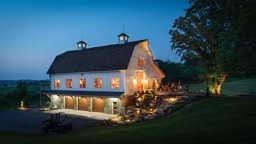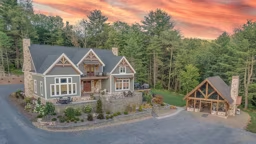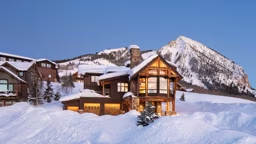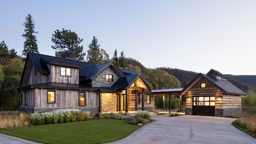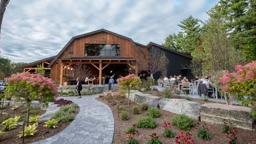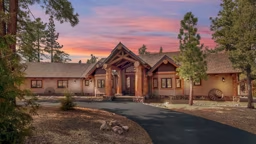
Reclaimed planking for the walls, floors and ceiling, along with exposed rafters, give the home a centuries-old feel. Simple, but elegant, fixtures and furniture bought off the Internet and at local home stores make for a comfortable family dining area at an affordable price.
That same day, back at their home in Denver, Leonard was researching land on the Internet, and made an appointment to see a piece that caught his eye. "On the way to that appointment, I fell asleep in the car," Kathy says. "When I woke up, I saw the trees and immediately realized I'd been there before. It was the same piece of land I'd seen with my friend. I knew right then we were going to get it." And they did.
Their new back yard included 40 acres of prime Rocky Mountain real estate, flush with trees and a breathtaking view of the Christos at an elevation of 9,000 feet. It was the perfect backdrop for the cozy 1,200-square-foot cabin they would build from Douglas fir timbers, with sliding barn-style doors, wide-plank hardwood floors and a stone exterior. Before they could realize their dream, though, the two community college professors still needed to find a timber framer for the job.
That's when they met a man wearing a heavy canvas kilt. "We were at a timber home show, and I saw this guy standing there in a kilt," recalls Leonard. "He seemed somewhat unconventional, but at the same time, he was pretty engaging." The man they met was Derek Swanger, owner of Kalispell, Montana-based Swan Woodworks. He was wearing a "Utilikilt," a cross between the traditional garb of the Scottish Highlands and today's utility belt. "When you're working outside in 100-degree weather, it's very comfortable," Derek says with a smile.
With the right land and timber framer on board, all the Winograds needed was a way to stay within their budget. With Derek's encouragement, the Winograds acted as their own general contractors, a step that saved them an estimated $30,000. Shopping on eBay and other Internet sites for materials and finishes during the build helped them save even more. Kathy also learned to navigate the permitting and inspection process to keep the one-year project on track. "You want to make friends with the permit people," she says. "I was always going by their offices, and asking lots of questions about what steps I should take next."
After getting a deal on reclaimed timber that had once been part of the Goodyear Tire factory in Denver and a dairy barn in Wisconsin, Derek recommended a traditional timber framing approach: design the home based on the materials available. "We let the materials dictate the design," Derek says. "It's a simple concept that goes back centuries. You don't decide what you're building until you're walking through the forest, looking at your trees."
Doing so meant the Winograds had to embrace a smaller home than originally planned, cutting nearly 500 square feet off their initial drawings. But Leonard says listening to Derek's advice, as well as the recommendations from other craftspeople involved in the build, such as woodworker Ken Fish of Circa Woodcraft, made all the difference. "You've got to listen to the people who are building your house, and let them throw their own creativity into it," Leonard says. "That way, it becomes their project and their house, and they care about it."
But even with the passionate team intact, erecting the house was a bit of a challenge. When the time came to raise the frame, a September blizzard hit. Derek may have left his kilt at home that day, but he was there, along with the rest of the crew, battling the blinding storm. "We had a crane that we were renting by the hour, and all these people had flown in from all over the country," Kathy says. "We could've put it off, but we decided to just start working. Fortunately, the storm subsided, and we got the frame up that day. We had a rough start, but our home turned out beautifully in the end."




